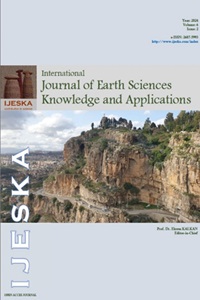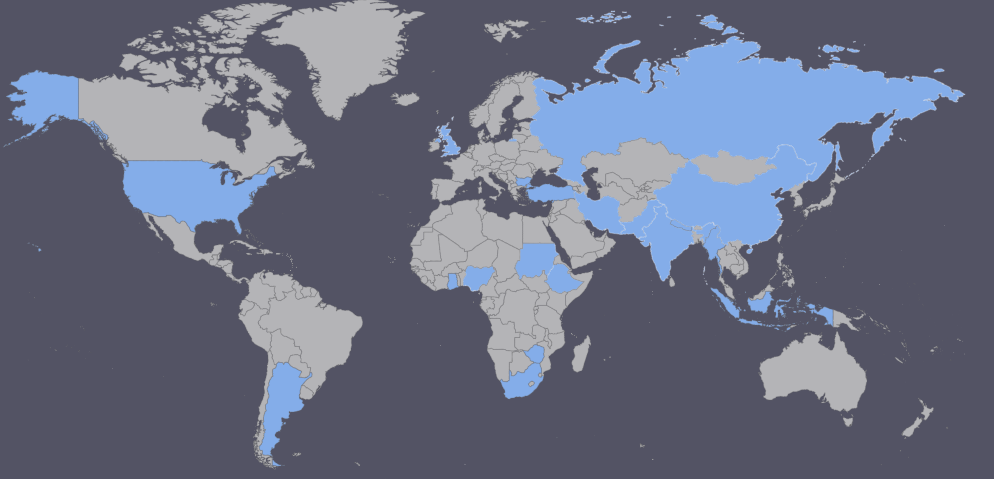A Comparative Analysis of Production Forecast for Vertical Gas Wells: Fractured vs. Non-Fractured
Keywords:
Vertical gas wells, Production forecast, Fractured wells, Darcy flow, Tubing head pressureAbstract
This study delves into the forecasting of gas production from vertical wells, specifically comparing the outcomes between non-fractured and fractured vertical gas wells. Focusing on dry gas extraction from natural gas formations post-transient flow, the analysis adopts assumptions of Darcy flow and zero skin factor. With a constant tubing head pressure as a parameter, the research scrutinizes the production forecasts of both fractured and non-fractured wells, shedding light on the implications of fracture stimulation on gas extraction efficiency and productivity.
References
Alagoz, E., 2023. Development and Analysis of a Program for Phase-Equilibrium Calculations Using the Peng-Robinson Equation of State. International Journal of Earth Sciences Knowledge and Applications 5 (1), 51-61. http://www.ijeska.com/index.php/ijeska/article/view/276/292.
Alagoz, E., Dundar, E.C., 2024. Forecasting Gas Well Production and Analyzing Pressure Dynamics. Journal of Energy and Environmental Science 2 (1), 000115. https://doi.org/10.23880/jeesc-16000115.
Alagoz, E., Giozza, G.G., 2023. Calculation of Bottomhole Pressure in Two-Phase Wells Using Beggs and Brill Method: Sensitivity Analysis. International Journal of Earth Sciences Knowledge and Applications 5 (3) 333-337. http://www.ijeska.com/index.php/ijeska/article/view/324/323.
Alagoz, E, Guo, Y., Li, L., 2023. Optimization of Fracture Treatment Design in a Vertical Well. Petroleum and Petrochemical Engineering Journal 7 (4), 000371. https://doi.org/10.23880/ppej-16000371.
Alagoz, E., Mengen, A.E., Bensenouci, F., Dundar, E.C., 2023. Computational Tool for Wellbore Stability Analysis and Mud Weight Optimization v1.0. International Journal of Current Research Science Engineering Technology 7 (1), 1-5.
Chen, X., 2021. Enhancing Gas Well Performance Through Optimized Completion Methods. SPE Reservoir Evaluation & Engineering 17 (1), 34-48.
Dranchuk, P.M., Abu-Kassem J.H., 1975. Calculation of Z Factor Natural Gases Using Equations of State. The Journal of Canadian Petroleum Technology PETSOC-75-03-03. https://doi.org/10.2118/75-03-03.
Dundar, E.C., Alhemdi, A., Gu, M., 2019. Impact of natural fracture-induced elastic anisotropy on completion and Frac design in different shale reservoirs. Proceedings of the 7th Unconventional Resources Technology Conference. https://doi.org/10.15530/urtec-2019-893.
Fetkovich, M. J., 121973. The Isochronal Testing of Oil Wells”SPE Paper 4529.
Jones, R., Wang, L., 2020. Pressure Drop Analysis in Gas Wells: Implications for Well Performance. SPE Production & Operations 15 (2), 78-92.
Laalam, A., Khalifa, H., Ouadi, H., Benabid, M.K., Tomomewo, O.S., Al Krmagi, M., 2024. Evaluation of empirical correlations and time series models for the prediction and forecast of unconventional wells production in Wolfcamp A formation. Paper presented at the SPE/AAPG/SEG Unconventional Resources Technology Conference, Houston, Texas, USA. https://doi.org/10.15530/urtec-2024-4043738.
Laalam, A., Tomomewo, O.S., Khalifa, H., Bouabdallah, N., Ouadi, H., Tran, T.H., Perdomo, M.E., 2023. Comparative analysis between empirical correlations and time series models for the prediction and forecasting of unconventional Bakken wells production. Paper presented at the Asia Pacific.
Lee, A.L., Gonzalez, M.H., Eakin, B.E., 1965. The Viscosity of Natural Gases Journal of Petroleum Technol 18 (8), 997-1000. https://doi.org/10.2118/1340-PA.
Lee, H., Smith, M., 2018. Impact of Well Design on Gas Production: A Case Study." Journal of Petroleum Science and Engineering 12 (4), 112-125.
Smith, J., Johnson, K., Brown, A., 2019. Forecasting Techniques for Gas Well Production: A Review. Journal of Petroleum Engineering 24 (3), 45-61.
Downloads
Published
Issue
Section
License
Copyright (c) 2024 Ekrem Alagoz, Emre Can Dundar

This work is licensed under a Creative Commons Attribution-NonCommercial-NoDerivatives 4.0 International License.
The authors keep the copyrights of the published materials with them, but the authors are aggee to give an exclusive license to the publisher that transfers all publishing and commercial exploitation rights to the publisher. The puslisher then shares the content published in this journal under CC BY-NC-ND license.



